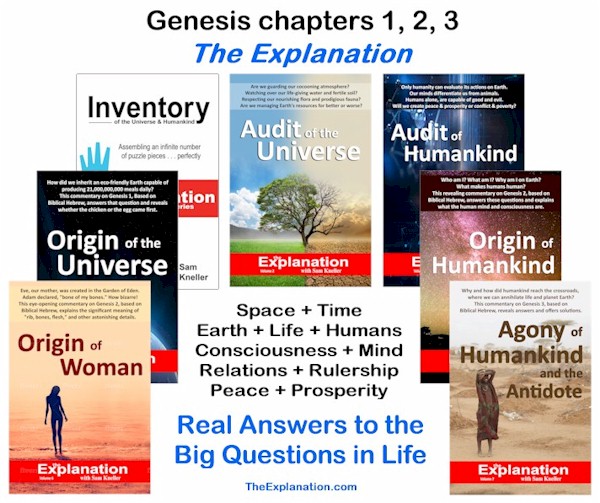Contents
Literal and figurative language elements are widespread throughout the Bible. The deeper meaning of a common word like water will surprise you.

Water. Awesome spiritual and figurative language, and what it represents.
Here’s another Bible-wide corroborative verse in this context of Noah’s flood and water. Examine what the figurative language represents. Use the Bible study tools at UnlockBibleMeaning.com.
20 Which sometime were disobedient, when once the longsuffering of God waited in the days of Noah, while the ark was a preparing, wherein few, that is, eight souls were saved by water.
21 The like figure whereunto even baptism does also now save us (not the putting away of the filth of the flesh, but the answer of a good conscience toward God,) by the resurrection of Jesus Christ:
The above context encloses profound Christian teaching, which I cannot broach now. But did you note the like FIGURE in verse 21? Peter compares Noah’s ark and water to baptism, specifically using the 4th Key, literal and figurative language. He knew all the Keys but I doubt he had a course to Unlock Bible Meaning with 7 Keys to Master Biblical Hebrew readers can register to study!
Water
Literal and figurative language references to water are elsewhere in the Bible. Again, in examples that many people, even believers, question. For instance, the crossing of the Red Sea when Moses, or rather God, parted the waters. The literal water is figurative language for both baptism of the Israelites and the destruction of sin for the Egyptians.
1 Moreover, brethren, I would not that you should be ignorant, how that all our fathers were under the cloud, and all passed through the sea;
2 And were all baptized unto Moses in the cloud and in the sea;
3 And did all eat the same spiritual meat;
4 And did all drink the same spiritual drink: for they drank of that spiritual Rock that followed them: and that Rock was Christ.
Here’s your figurative language exercise
- What are several literal and figurative language references in these verses?
- There are at least three common words used in this context.
- And one uncommon food.
- What do they represent for converted Christians?
- Do the meditation before you click on the answer.
Figurative language and its meaning
- Cloud: covered the Israelites – Holy Spirit
- Sea: through which they passed – Baptism
- Manna: provided all the sustenance for their health – Word of God
- Rock: which provided the water they needed for life – Christ
These literal everyday common elements are figurative language for some major aspects of Christianity.
Most focus on the cloud, sea, manna, rock, ark, water, and look for some physical evidence losing the fuller comprehension or outrightly rejecting the narrative. The statement in 1 Cor. 14:2, were all baptized unto Moses in the cloud and in the sea is a reference to the literal parting of the sea as figurative baptism. Detractors look for some astronomical phenomenon that pulled the waters apart or strong winds. They won’t find them.
Just reading baptized unto Moses literally hides comprehension. Moses preFIRGURES Christ. Moses was a literal person and figurative of Christ. If readers stick with the literal, they lose over 50% of understanding.
Water, in the form of the sea, is figurative language. Like Noah, it has a double contrasting and figurative meaning. It saves Noah, eight souls were saved by water (1 Pet. 3:20), and the Israelites in Moses’ day as well. Opposingly, it destroys the evil world and the pursuers of God’s people.
By the way, this contrasting aspect of water should remind you of Key 2, opposite meanings for the same Biblical Hebrew word. These words and examples are figurative language for how God works with humankind. When you understand this, you see God is merciful in saving repentant sinners. While He will not tolerate impenitent hardness of heart. This is the whole story of the two trees, the Tree of Life and the Tree of Death.
The book of Exodus is an exercise for Key 4, the literal and figurative meaning of Hebrew words, elements, events, offices, and many other significances. The whole scenario of the literal trials and travels of the Israelites is a recital of lessons for New Testament Christians. It’s like one long parable. There’s an exciting spiritual Exodus of humankind from the bondage of the Serpent of Genesis 3. But that’s another story.
The possessors of the Old Testament covenant had the essentials we need in the New Testament covenant. There’s was physical, ours is spiritual. Again, the literal and figurative representation.
This is such an underestimated, yet so exciting key, we will study a final lesson to learn how to apply this figurative language to unlock Bible meaning.
Dig Deeper into The Explanation
Online Study Courses to Uncover the Mystery of Adam and Eve’s Nakedness… with no fuss. Free video mini-course revealing the God-intended meaning of Scripture via Biblical Hebrew. It’s so easy, it’ll blow you away. Join now and add new motivation to your Bible study.
Join The Explanation Newsletter to stay informed of updates. and future events. No obligations, total privacy, unsubscribe anytime, if you want.
The Explanation series of seven books. Free to read online or purchase these valuable commentaries on Genesis 1-3 from your favorite book outlet. E-book and paperback formats are available. Use this link to see the details of each book and buy from your favorite store.

Since you read all the way to here… you liked it. Please use the Social Network links just below to share this information from The Explanation, Awesome Figurative Language of Biblical Hebrew Word: Water



Let’s Connect!